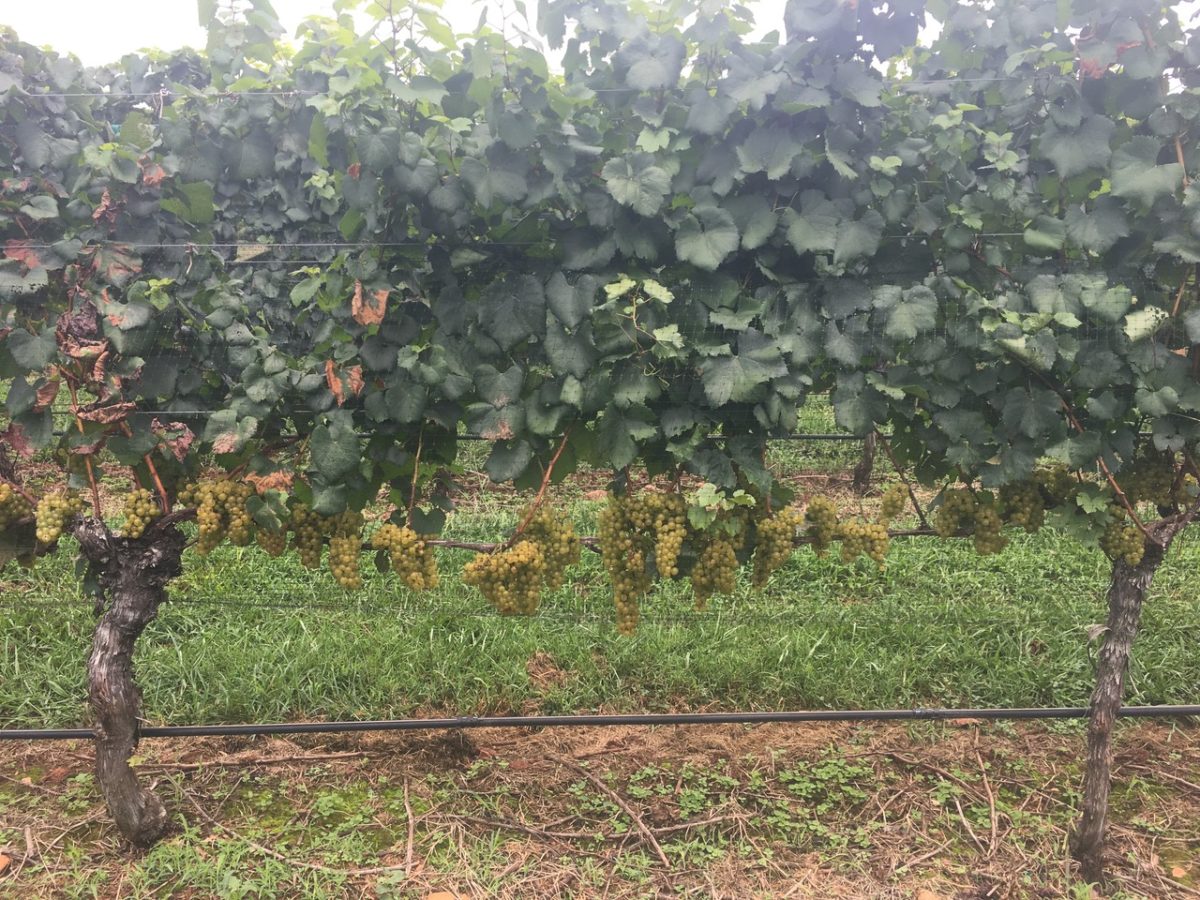By Breanna Kendrick

Three faculty members at the University of Georgia are working on a project to improve sour rot management in wine grapes. Brett Blaauw, assistant professor and Extension specialist in entomology, is among one of those working on the project.
According to Blaauw, a small fly, the spotted wing drosophila, can attack healthy grapes and help transmit sour rot. “Sour rot is a complex of fungus, bacteria and yeast that causes the fruit to rot,” he says.
Blaauw worked with a plant pathologist and a viticulturist on a combined approach using insecticides, fungicides and leaf removal to help reduce sour rot in grapes. “We removed leaves covering the grape clusters,” explains Blaauw. “We’re basically opening up where the grape clusters grow. That allows for more air flow, which can reduce disease growth. It can also allow for better penetration of insecticides and fungicides, and creates a warmer environment where the flies don’t like to live. So, removing those leaves and adding in those pesticides can really create an environment that’s bad for pests in general.”
Thankfully for the growers who participated in this project, the incidence of sour rot was low in all of the treatments and controls. “We had to really dive into the data, but after some analysis it turned out it helped,” says Blaauw. “By having a combination of pesticides and leaf removal, we were able to overall significantly reduce the amount of incidents of sour rot … After this year, only one of our sites had the sour rot, but at that site we were able to reduce the incidence of the disease.”
Blaauw says the results are preliminary at this time, but he hopes to repeat the study this year in order to draw a stronger conclusion that that this approach works to reduce sour rot. “It’s hard to make a broad statement that leaf removal plus pesticides will work for everyone. But, for that one vineyard, it worked well,” Blaauw concludes
Share this Post










